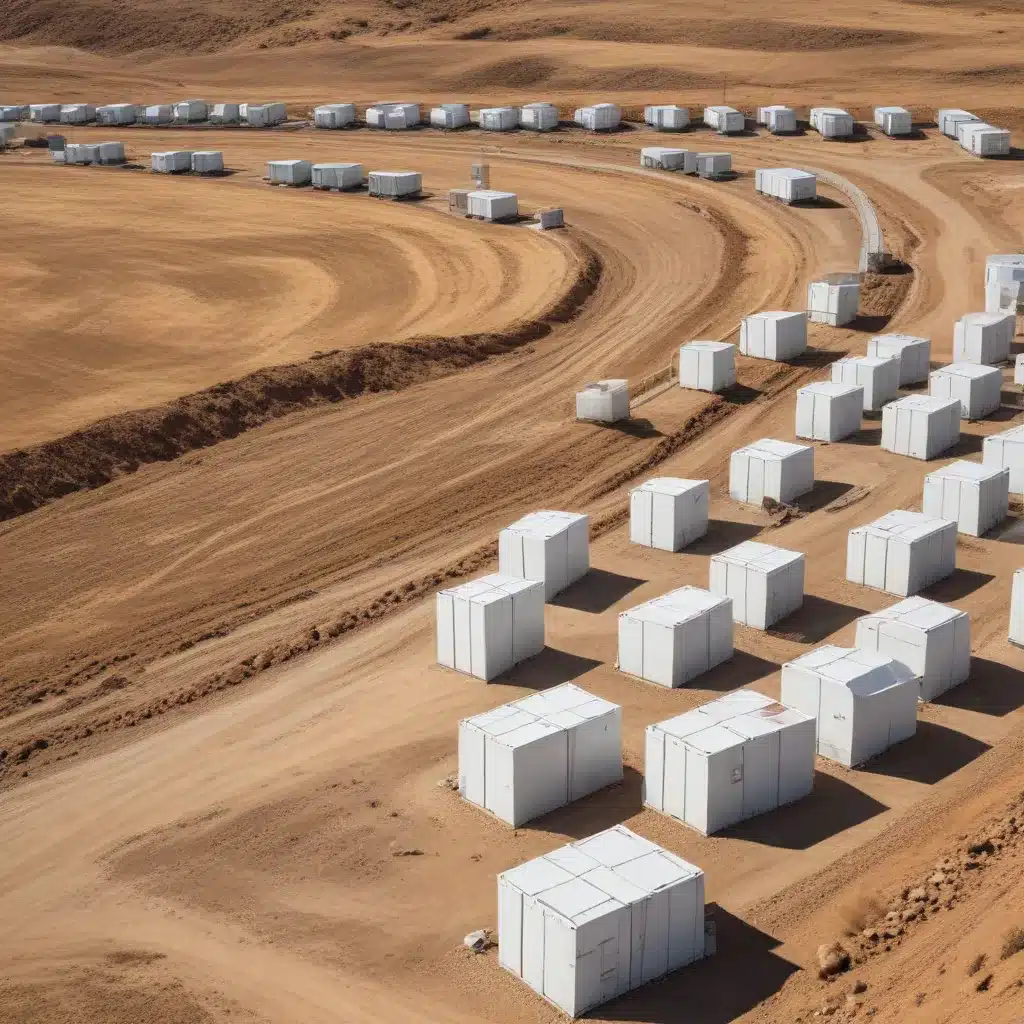
The European energy landscape is undergoing a remarkable transformation as the continent accelerates its shift towards clean, renewable sources. At the heart of this transition lies energy storage, a critical enabler that can unlock the full potential of intermittent renewables like wind and solar. However, the path to widespread energy storage adoption is fraught with regulatory hurdles and policy uncertainties that must be navigated to ensure a smooth, sustainable energy future.
Energy Storage Regulations
The regulation of energy storage in Europe is a complex and evolving landscape, with varying approaches across national and regional boundaries. Many countries have implemented dedicated policies and guidelines to incentivize the deployment of battery storage, pumped-hydro storage, and Power-to-X technologies like hydrogen production. For instance, the European Renewable Energy Directive provides a framework for member states to develop tailored support schemes, such as investment grants, feed-in tariffs, and capacity market mechanisms.
Yet, the lack of harmonized regulations across the EU presents a significant challenge. Divergent rules and approval processes for grid interconnection, energy market participation, and environmental impact assessments can create barriers to the seamless integration of energy storage assets. This patchwork of policies not only hinders cross-border collaboration but also increases the complexity and costs for project developers.
Policy Frameworks
To address these issues, policymakers are actively shaping comprehensive policy frameworks to foster a thriving energy storage ecosystem. The European Green Deal, for example, has identified energy storage as a cornerstone of the continent’s clean energy transition, setting ambitious targets for renewable energy deployment and emissions reduction.
Complementing this overarching strategy, the EU has introduced several targeted initiatives, such as the EU Battery Regulation, which aims to establish a sustainable and circular battery value chain. Additionally, the Hydrogen Strategy for a Climate-Neutral Europe outlines a roadmap for the large-scale deployment of hydrogen technologies, including their integration with renewable power-to-gas and power-to-liquid solutions.
These policy frameworks provide a foundation for harmonized regulations, incentives, and standards, paving the way for a coordinated, Europe-wide approach to energy storage adoption. However, the implementation and enforcement of these policies remain a work in progress, requiring ongoing collaboration between policymakers, industry stakeholders, and local communities.
Compliance Requirements
Navigating the complex web of energy storage regulations and compliance measures is a critical challenge for project developers and asset owners. Depending on the technology, size, and location of the energy storage system, a wide range of permits, licenses, and approvals may be required.
For instance, the installation of a large-scale battery energy storage system (BESS) may necessitate environmental impact assessments, construction permits, and grid connection agreements. Similarly, the development of a green hydrogen production facility may involve securing water usage rights, emission control permits, and safety certifications.
Failure to comply with these regulatory requirements can result in project delays, financial penalties, and even the complete halt of operations. Therefore, energy storage project developers must stay abreast of the evolving regulatory landscape, engage in proactive dialogues with policymakers, and leverage the expertise of specialized legal and technical advisors.
Barriers to Energy Storage Deployment
Despite the growing recognition of energy storage’s importance, several barriers continue to impede its widespread adoption across Europe. Among the key challenges are:
Permitting and Licensing Challenges
The complex and often overlapping approval processes for energy storage projects can significantly prolong development timelines, deterring potential investors and slowing the pace of deployment.
Grid Integration Issues
The integration of energy storage assets into existing electricity grids poses technical and operational complexities, requiring robust grid planning, system modeling, and interconnection standards.
Economic Considerations
The high upfront capital costs of energy storage technologies, coupled with uncertain revenue streams and a lack of harmonized market design, can create financial barriers that hinder widespread deployment.
Policy Reform Strategies
To overcome these barriers and drive the energy storage revolution, policymakers are pursuing a range of reform strategies:
Legislative Initiatives
The EU is actively working to harmonize regulations and create a level playing field for energy storage, through initiatives like the European Battery Alliance and the Clean Energy Package.
Incentive Programs
Governments are introducing financial incentives, such as investment tax credits, feed-in tariffs, and capacity payments, to improve the economic viability of energy storage projects.
Stakeholder Collaboration
Policymakers are fostering multi-stakeholder dialogues, bringing together industry players, researchers, and community representatives to shape a collaborative, inclusive approach to energy storage deployment.
Navigating the Transition to Energy Storage
As Europe embarks on its journey towards a sustainable energy future, the integration of energy storage technologies will be crucial. Overcoming the regulatory hurdles and policy uncertainties will require a concerted effort from policymakers, industry stakeholders, and the public.
Technological advancements, such as the continuous improvements in lithium-ion batteries, the emergence of long-duration energy storage solutions, and the scaling of green hydrogen production, will unlock new possibilities for energy storage applications. Simultaneously, the transformation of energy markets, the evolution of business models, and the integration of energy storage into broader sustainability frameworks will shape the path forward.
By navigating this complex landscape and implementing comprehensive policy reforms, Europe can unlock the full potential of energy storage, paving the way for a resilient, decarbonized, and digitally-enabled energy system. The European Future Energy Forum provides a platform for industry leaders, policymakers, and innovators to collaborate and drive the energy storage revolution, ensuring a sustainable and prosperous future for all.







